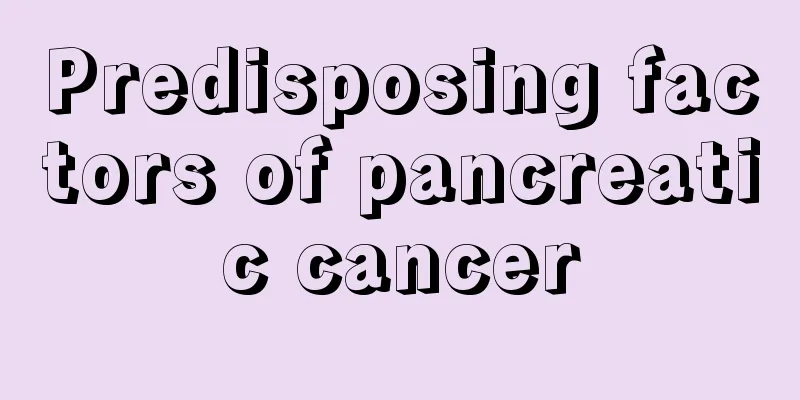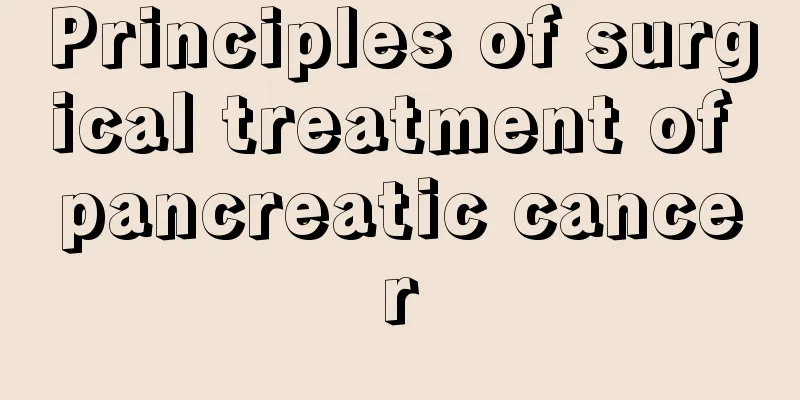Predisposing factors of pancreatic cancer

|
The occurrence of pancreatic cancer does not happen overnight. It is affected by many factors. Some adverse factors increase the probability of pancreatic cancer, including smoking, pancreatitis and diabetes. The specific introduction is as follows: 1. Smoking Smoking is the most important environmental factor in the development of pancreatic cancer. The compounds in tobacco are transported to the pancreas and metabolized there, thus inducing pancreatic cancer. The main ingredients in tobacco that cause pancreatic cancer are aromatic amines, nitrosamines, nitrites, and nicotine. They attack genetic material, causing some genes to be expressed at inappropriate times and locations (i.e., proteins are synthesized under the guidance of these genes). These attacks accumulate over time, and incorrect gene expression gradually pushes the attacked pancreatic cells to the opposite side of human health: cell canceration, invasion and metastasis, leading to human death. The risk of pancreatic cancer in smokers is about three times higher than that in non-smokers, but quitting smoking for 10 years can reduce it to the same level as normal people. For lifelong smokers, there is a very obvious dose-response relationship between smoking and pancreatic cancer risk in the last 15 years of their lives, that is, the more they smoke, the greater their risk of pancreatic cancer. 2. Chronic pancreatitis Chronic pancreatitis is the biggest risk factor for pancreatic cancer, more dangerous than smoking. All forms of chronic pancreatitis can lead to pancreatic cancer. It should be noted that only a small number of patients (3% to 4%) develop pancreatic cancer secondary to pancreatitis. 3. Diabetes People have long noticed that there is a certain relationship between diabetes and pancreatic cancer. Diabetes may be a risk factor for pancreatic cancer, or it may be an early sign of pancreatic cancer. In other words, in some patients, diabetes causes pancreatic cancer, and in some patients, pancreatic cancer causes diabetes. The key lies in the time sequence of the diagnosis of diabetes and pancreatic cancer. If diabetes is diagnosed first, then the former is more likely; if pancreatic cancer is diagnosed first, then the latter is more likely. Of course, such a judgment requires a rigorous premise: the diagnostic methods we now have are sufficient to detect diabetes and pancreatic cancer at any stage. |
<<: Who are the most susceptible groups to pancreatic cancer
>>: How to evaluate whether pancreatic cancer patients are suitable for surgical treatment
Recommend
Why does eating apples make me feel sick?
Fruit is indispensable in our lives. Eating fruit...
How much does interventional treatment for liver cancer usually cost? 7 advantages of interventional treatment for liver cancer
Liver cancer is a common cancer in my country. Mo...
What foot bath can be used to treat rheumatism?
As we all know, rheumatism is mostly caused by co...
Can vitamin b2 be applied externally?
Most people are familiar with vitamin B2. Vitamin...
The effect and efficacy of smooth sailing
Smooth sailing is a green plant. Mainly used for ...
Four commonly used imaging examinations for esophageal cancer
In addition to helping to clearly diagnose esopha...
Drug treatment for advanced colorectal cancer
In these bright and sunny days of spring, people ...
What are the symptoms of gout?
With the improvement of living standards, people&...
Why is mixed cervical spondylosis the most common
Various types of cervical spondylosis are caused ...
What are the effects of Dalawon injection
With the improvement of people's living stand...
7 types of "colds" are actually serious diseases
Coughing, runny nose, sneezing, fever...are all c...
Skin diseases caused by spider urine
What are the skin diseases caused by spider urine...
What is the difference between early negative breast cancer and early positive breast cancer?
What is the difference between early negative bre...
Will hysterectomy affect the couple's life? Does hysterectomy affect women's endocrine system?
For female friends, gynecological diseases are of...
Things to note after bone puncture
We all know that bone marrow puncture is a common...









